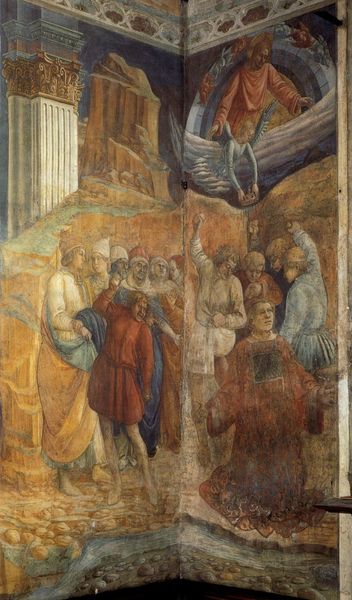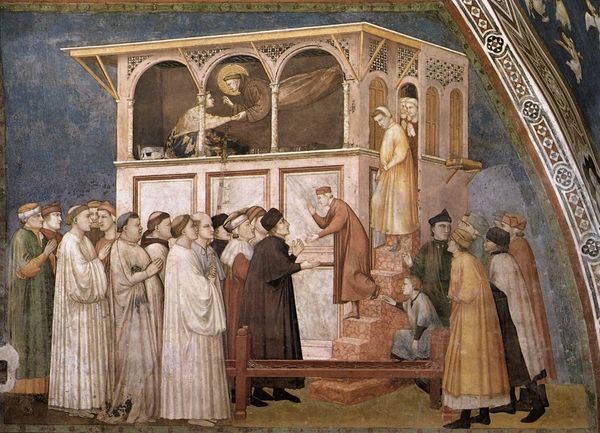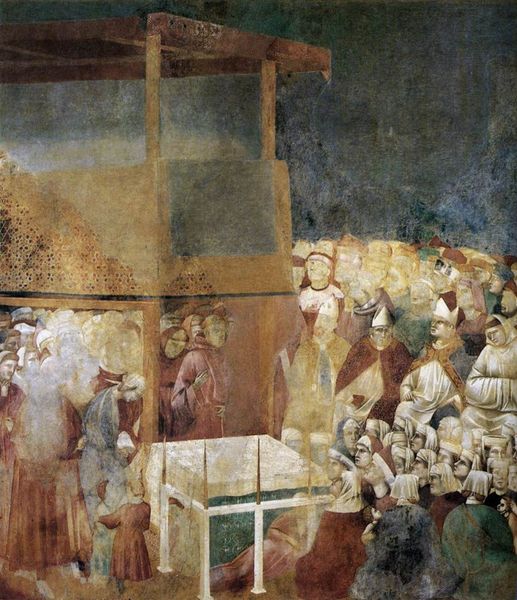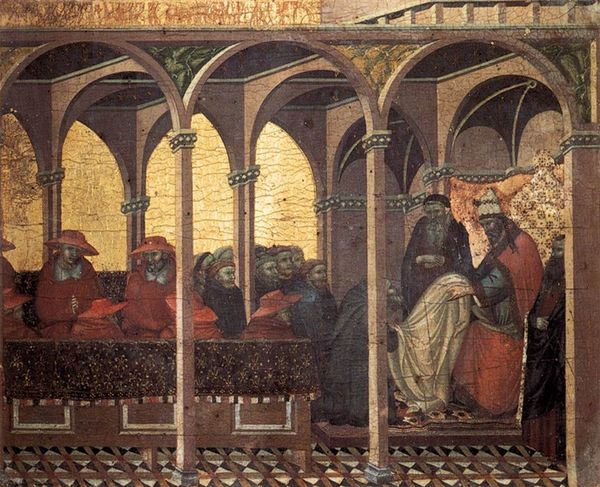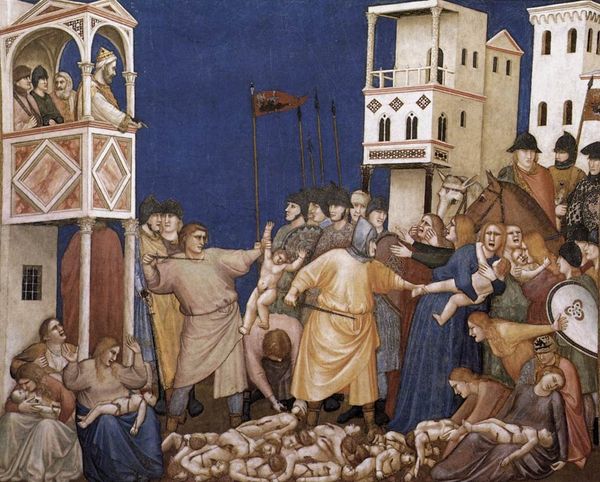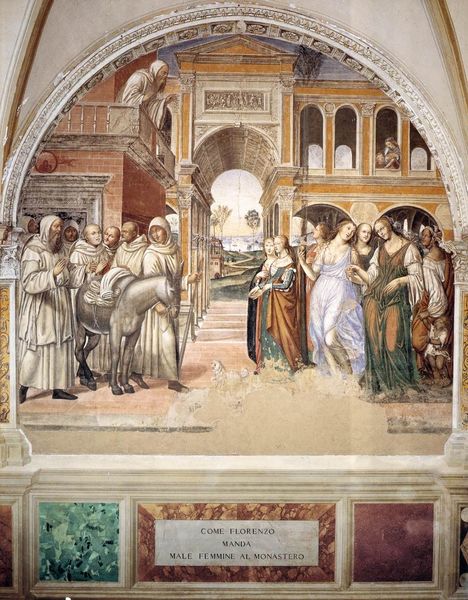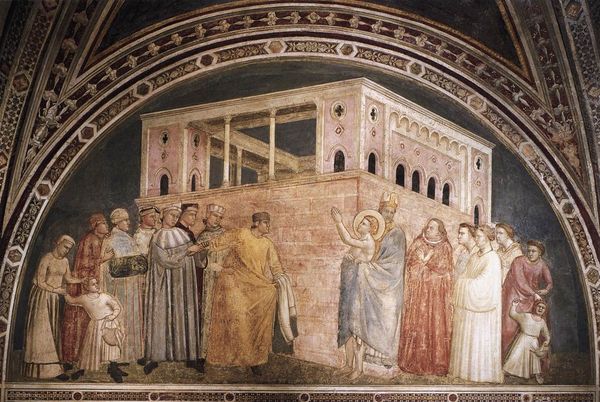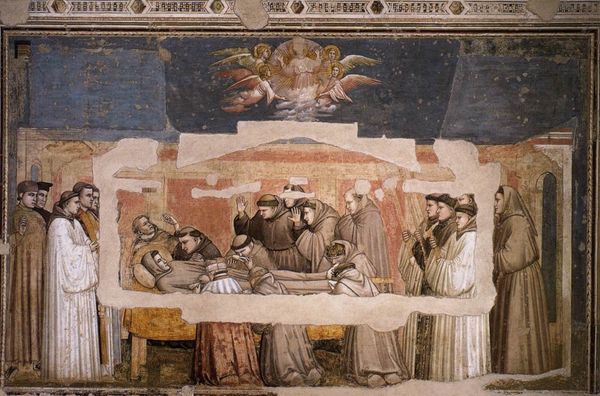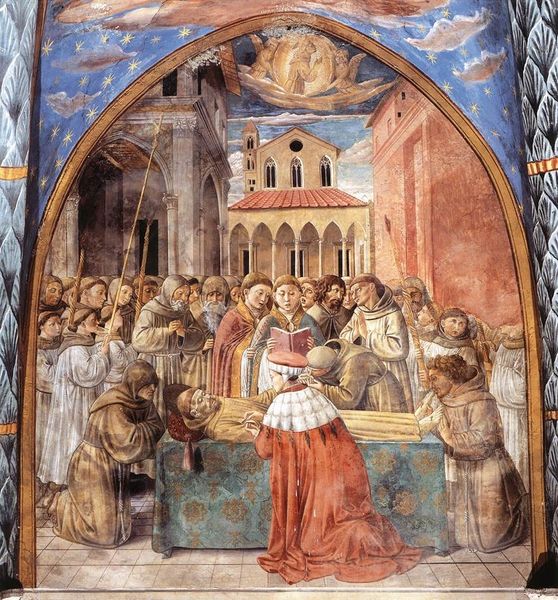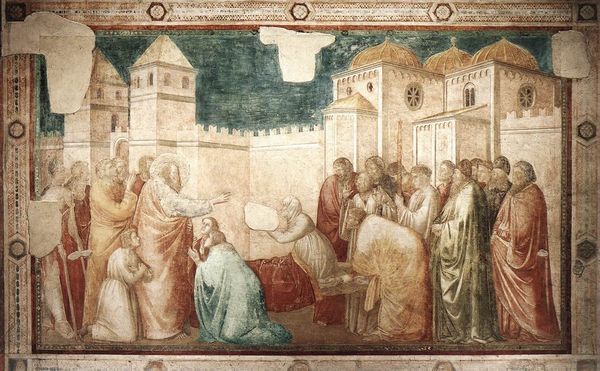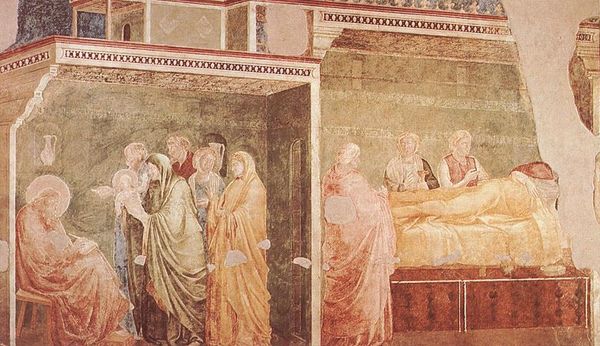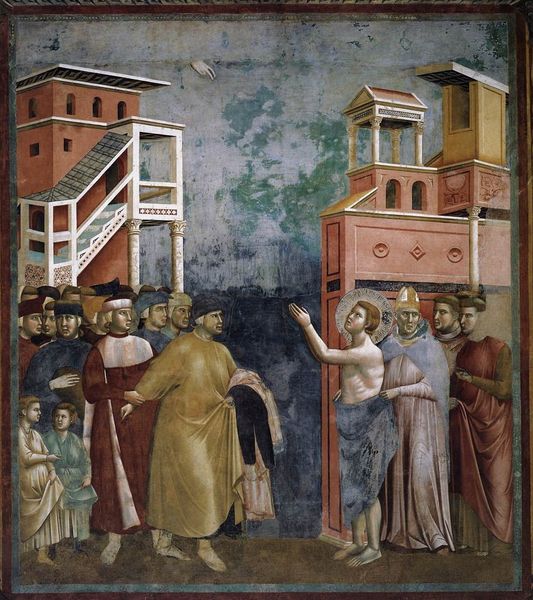
painting, fresco
#
portrait
#
medieval
#
narrative-art
#
painting
#
gothic
#
landscape
#
figuration
#
fresco
#
intimism
#
chiaroscuro
#
christianity
#
cityscape
#
history-painting
#
italian-renaissance
#
early-renaissance
#
christ
Copyright: Public domain
Giotto painted 'The Death of the Boy in Sessa' as a fresco in the Basilica of Saint Francis of Assisi. We see a collapsed building and a crowd consumed by grief. The motif of collapsing structures echoes through time, symbolizing chaos, loss, and the fragility of human life. Consider the Tower of Babel: its fall represents divine judgment and the breakdown of communication. Or the ruins in Piranesi's etchings, evoking the transience of power and the decay of civilization. Here, the destroyed building may mirror the personal devastation experienced by the figures. Notice the raw emotion etched on the faces. The raised hands, the weeping figures—gestures of sorrow that transcend cultures. These expressions tap into a primal, collective memory of loss. Such powerful displays of emotion remind us of the universality of human experience, engaging our subconscious and prompting empathy. Like the mythical phoenix, the motif of destruction and rebirth emerges repeatedly in art and history. It speaks to the cyclical nature of existence, where endings inevitably lead to new beginnings. The ruins here will eventually become the foundation for something new, reminding us of the enduring human spirit.
Comments
No comments
Be the first to comment and join the conversation on the ultimate creative platform.
